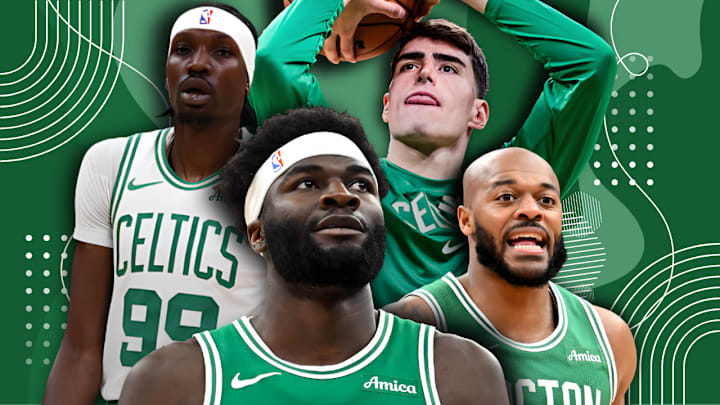BOSTON — For the last few years, the Boston Celtics’ two-man games have been second nature. Oftentimes, it would be Jayson Tatum with the ball in his hands and Al Horford setting the screen. Sub out Tatum for Jaylen Brown, Derrick White, or Payton Pritchard and Horford for Kristaps Porzingis or Luke Kornet, and it would serve the same effect. That group built chemistry.
Kornet knew where Tatum wanted to drive, and Tatum knew where Kornet wanted to roll. Ball-handlers understood where Horford liked to pop to, when Porzingis wanted a post-up, and the roll men understood when the shot creators were looking to shoot or get downhill.
This year, everything is different.
New Celtics big man room will have to learn (and fast)
Neemias Queta and Xavier Tillman Sr. are the lone holdovers from the past two seasons, and neither was a significant part of Boston’s rotation. Add in Luka Garza and Chris Boucher, and the Celtics will have to develop their big-man connections all over again.
And though it may seem backward, considering how much center talent Boston lost over the summer, the big men are going to be more involved than ever this season.
“I think this year, there's a lot more onus on the bigs being in the action a lot,” Garza told Hardwood Houdini in Toronto. “Creating action for others. And so, a lot of that has to do with screening and different kinds of screens.”
Learning how to play with each other is work in progress, but there’s a clear outline to success.
“Just having an understanding of how we're trying to play,” said Joe Mazzulla. “What makes the most sense? Are you being defended by the five? Are you being defended by a small? What's the right screen you should set? What's the timing of the action that you should have? Defensively, who you're guarding? What makes the most sense on a coverage? Can you change that coverage? If there's a cross match. Just thinking the game.
“Being able to make the right read, depending upon what gives us the best chance to be successful on every single possession. Being able to do that over and over again.”
On one hand, it’s up to Brown, White, Pritchard, and Anfernee Simons to learn the big men’s tendencies. Garza wants to post up. His days at Iowa are evidence enough of his post talent. Boucher will either space the floor or cut off the ball, utilizing his shooting ability and athleticism.
Tillman is more of an in-between case. He’ll take a three, but oftentimes, he’ll catch the ball and rescreen, throwing defenses off balance. Queta runs to the rim with force.
“I think it's just a work in progress,” said White. “Obviously, about screening angles and where I to set it, but also where to roll, when to pop, how far to roll. So, that's just something that we're just going to continue to develop and just work on that two-man game and just developing that relationship depending on what they do defensively. And so, it's gonna be a work in progress, but got a lot of guys that are good listeners, good hard workers, and so, we'll just pick it up.”
At the same time, those four guys need to be familiar with their ball-handler counterparts. Pritchard’s drive and bump game. Brown’s mid-range pull-ups. White’s floaters. Simons’ downhill ability. And all of their desires to shoot from long range.
They have to study, learn, and adapt.
“I think it's been great,” Boucher said of the process. “I mean, obviously, we're all finding ways to set screens. When you have a smaller one, slip, when you have a bigger one, to set a screen and actually hold it. So, I think it's really good for us as a group to figure out what kind of screen we got to set and all.
“And for the guys that have the ball, just for them to make different reads. And I think we're both getting better. It's intangible. And it's really good that we get to do that and bunch it down and see where we can get better early this season.”
Boston’s offense isn’t the same as it was. A slow, methodical approach is being replaced by a fast-paced style that suits the current roster. As a result, screens and reads have changed.
“I was talking to our head offensive guy, Ross, the other day. I was kind of telling him that we have some of the same stuff as last year, with a little bit of a twist,” Tillman said. “So, it's kind of breaking away the last year's offense a little bit to help me run to different spots. Because we used to run to the wings a lot. Now, we're running to the middle and setting screens from there. So, it's been good, though.”
Shot profiles will be altered. Different players will be leading the way. Stats are going to get jumbled on a nightly basis. Everything the Celtics’ offense has been for the past two seasons will be thrown out the window (for the most part).
But in the midst of it all, the very core of what the Celtics want to accomplish on offense will be the same. Set screens, make reads, and adapt to what the game presents.
And it’s up to the new big-man room to figure out the best way to do that.
